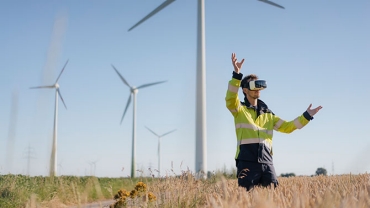
EU Fit for 55 Package: pre approval for next months EP vote
19/05/22
With the Fit for 55 Package, the EU aims to reduce its net greenhouse gas emissions by at least 55 per cent by 2030 compared to 1990 levels, and reach climate neutrality by 2050. The dedicated committee responsible for the preparation of the European Parliament’s vote on the European Commission’s most important environmental legislative proposals, as part of the Fit for 55 package, has agreed with these proposals together with a number of changes. In general, these changes sharpen the ambition level of the package. With this, the next step in the EU legislative process is taken and this key part of the package is now up for voting by the full European Parliament in June 2022.
The European Commission’s key proposals from the Fit for 55 Package that have been prepared by the ENVI committee are: Revision EU ETS, EU ETC for aviation, CBAM, CORSIA, Effort Sharing Regulation, LULUCF, CO2 emissions standards for cars and vans and (together with the committee on Employment and Social Affairs) the Social Climate Fund.
The Fit for 55 Package aims to provide for better alignment between the European environmental tax and regulatory framework and some of the ESG principles. Next to environmental targets, the package also addresses certain societal aspects of the energy transition. For example, a Climate Social Fund is introduced, aiming to mitigate the societal impact of the extended emissions trading scheme.

What does this mean for your company?
It is uncertain whether the suggested changes to these Fit for 55 Package proposals will make it to the final versions. However, in any case, the final version of the package will have a significant impact on companies and individuals. In particular it will have an impact on companies that are in carbon intensive industries such as iron, steel, aluminium, chemicals and energy. Furthermore, the logistics and transportation sector (including shipping, road transport and aviation), construction sector, and companies owning real estate and/or production sites in the EU that use certain materials from outside the EU will be impacted significantly. Please note that the different legislative proposals within the Fit for 55 package each have different timelines. However, it is widely expected that a large part of the Fit for 55 Package will be enacted by 1 January 2023. For example tightening of EU ETS starts straight away in the year of entry into force.
So now is the time for companies to scrutinise their supply chain and value chain and get a clear view on the related carbon footprint (direct and indirect). Subsequently, options available to reduce the footprint can be investigated. Doing this now, allows you to implement the required processes and procedures to obtain the required insights. In addition, it also provides for the opportunity to optimise the supply chain, amending procurement contracts and to enter into negotiations/conversations with stakeholders. Doing all this in a timely manner, should mitigate as much as possible additional taxation that will inevitably follow from the measures included in the Fit for 55 Package.
In order to aid the business case for investments to reduce the carbon footprint, there is a wide range of EU and domestic incentives available. Ideally, both the additional tax measures and the available incentives should form an integral part of a sustainable business case.
The ‘Fit for 55 package’: proposed changes to the Green Deal building blocks
With the ENVI committee’s amendments to the Package proposals, the aim is to increase the ambition level compared to the Commission proposals. The initial proposals of the Commission can be found here: Fit for 55 Package. Hereafter a summary of the main proposed changes is included.
EU emission trading scheme (EU ETS)
- A further increase of the annual rate of reduction of the emission allowances by 0.1 percentage points each year until 2030, starting from 4.2 percent in the year of entry into force.
- Inclusion of municipal waste incineration in the ETS as from 2026.
- Introduction of a bonus-malus-system from 2025, which will get the most efficient installations in a sector additional free allowances (bonus). As malus, those that do not establish a decarbonisation plan or sufficiently act on recommendations, can lose part or all of their free allowances.
- A more strict ETS regime for shipping emissions:
- 100 percent of emissions from intra-European routes and 50 percent of emissions from extra-European routes from and to the EU as of 2024.
- As of 2027 100 percent of emissions from all trips, with possible reduction to 50 percent for non-EU countries, subject to certain conditions.
- Inclusion of other GHG emissions than carbon dioxide (CO2), nitrous oxide (N2O) and perfluorocarbons (PFCs), such as methane nitrous oxides.
- Introduction of an Ocean Fund to support the transition to an energy efficient and climate resilient EU maritime sector, funded by 75 percent of the revenues generated from the auctioning of maritime allowances.
- 5 years quicker phase out of free allowances. Free allowances should disappear by 2030 by which time the Parliament also wants a fully operational Carbon Border Adjustment Mechanism (CBAM). The free allowances should be reduced to 90 percent in 2025, 80 percent in 2026, 70 percent in 2027, 50 percent in 2028, 25 percent in 2029 and 0 percent in 2030.
- Additional safeguards to prevent citizens from bearing additional energy costs as a result of the implementation of ETS II for commercial buildings and transport: private buildings and private transport should be excluded prior to 2029 and implementation of a safeguard that releases 10 million allowances if the average ETS II allowance price breaches 50 euros before 2030.
- The Social Climate Fund, aimed to help low-income families, receives the revenues from auctioning 150 million ETS II allowances.
- Enlarge the Innovation Fund (to be renamed to Climate Investment Fund) which supports innovation in technologies that contribute significantly to the decarbonisation of the ETS sectors.
- EU ETS for aviation:
- Application of EU ETS to all flights departing from an airport located in the European Economic Area (EEA), not just to flights within the EEA as at present, starting 30 April the year after the entry into force.
- Quicker phase out of free allocations: by 2025 instead of 2027. For gradual phase out, an accelerated decrease of 50 percent in free allocations for 2024.
- 75 percent of the revenues generated from the auctioning of allowances for aviation (except for those earmarked as own resources in the EU budget) go to the Climate Investment Fund, for innovation and new technologies.
- More transparency with publication of data related to aircraft operators.
Carbon Border Adjustment Mechanism (CBAM)
- Phasing in CBAM 5 years earlier, to have it fully operational by 2030. This connects to the 5 years quicker phase out of free allowances.
- Expanding the scope of CBAM to also cover hydrogen, polymers and organic chemicals in addition to the products proposed by the Commission (cement, iron and steel, aluminium, electricity, and fertilisers).
- Extend CBAM to include indirect emissions, meaning emissions from the generation of electricity used by manufacturers.
- Introduction of one centralised EU CBAM authority instead of 27 national competent authorities.
Effort Sharing Regulation (ESR)
- Increase the mandatory GHG reduction 2030-target at EU level from 30 to 40 percent compared to 2005 levels.
- Further reduce limits for using next year’s emission allowances and also for banking emission allowances if mandatory reductions are exceeded.
- Introduction of trade restrictions on trade allowances between EU Member States.
- More attention to GHG emissions from biomass-burning installations to ensure that the usage of sustainable fuels does not result in more emissions than fossil fuels.
- More EU-wide targets set by the Commission for the reduction of non-CO2 emissions by July 2023.
Legislative process and next steps
After presentation of the Package by the European Commission on 14 July 2021, the ball is now in the European Parliament's court. Before voting, the Parliament has mandated its Committee on the Environment, Public Health and Food Safety (ENVI) to review the most relevant proposal of the Fit for 55 Package and if needed to prepare amendments. These key proposals are: Revision EU ETS, EU ETC for aviation, CBAM, CORSIA, Effort Sharing Regulation, LULUCF, CO2 emissions standards for cars and vans and (together with the committee on Employment and Social Affairs) the Social Climate Fund. On 17 and 18 May 2022 the ENVI committee voted in favour of these proposals, containing a number of amendments.
Voting on these proposals from the Fit for 55 Package by the full European Parliament is planned for somewhere between 6 and 9 June. After the European Parliament has defined its position and provided that it has given its consent to the package, the Council of the European Union will have to decide on the package. After approval by both the European Parliament and the EU Council, the amended Directives enter into force.
Please note that the different legislative proposals of the Fit for 55 package each have different timelines. However, it is widely expected that a large part of the Fit for 55 Package will be enacted by 1 January 2023. As a monetary impact in terms of additional taxes could materialise quite soon following the enactment, it is important to start preparing sooner rather than later to identify what the current carbon footprint (direct and indirect) of your operations is and to identify what the abatement options (sustainable business case) are.




















